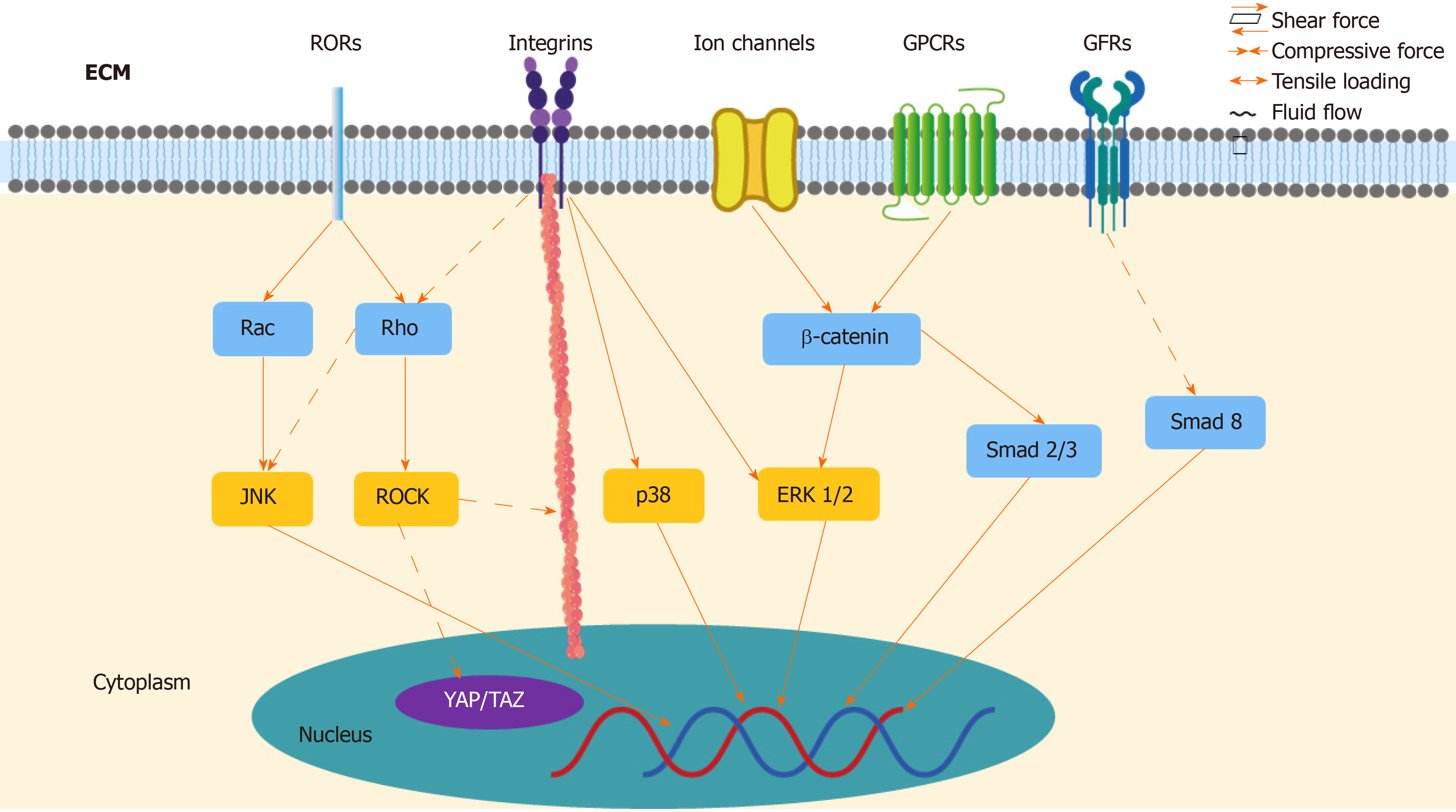Copyright
©The Author(s) 2020.
World J Stem Cells. Sep 26, 2020; 12(9): 952-965
Published online Sep 26, 2020. doi: 10.4252/wjsc.v12.i9.952
Published online Sep 26, 2020. doi: 10.4252/wjsc.v12.i9.952
Figure 2 Signaling pathways responding to mechanical stimuli applied to a cell.
This figure describes how mechanosensors, such as G-protein coupled receptors, integrins, ion channels, and growth factor receptor, sense mechanical loading and activate a series of signaling pathways downstream, in turn promoting gene expression and/or cytoskeleton rearrangement in tendon repair. ECM: Extracellular matrix; ROR: Receptor tyrosine kinase-like orphan receptor; GPCRs: G-protein coupled receptors; GFRs: Growth factor receptor; JNK: c-Jun N-terminal kinase; ROCK: Rho-associated protein kinase; ERK: Extracellular signal-regulated kinase; YAP: Yes-associated protein; TAZ: PDZ-binding motif.
- Citation: Wang HN, Huang YC, Ni GX. Mechanotransduction of stem cells for tendon repair. World J Stem Cells 2020; 12(9): 952-965
- URL: https://www.wjgnet.com/1948-0210/full/v12/i9/952.htm
- DOI: https://dx.doi.org/10.4252/wjsc.v12.i9.952









